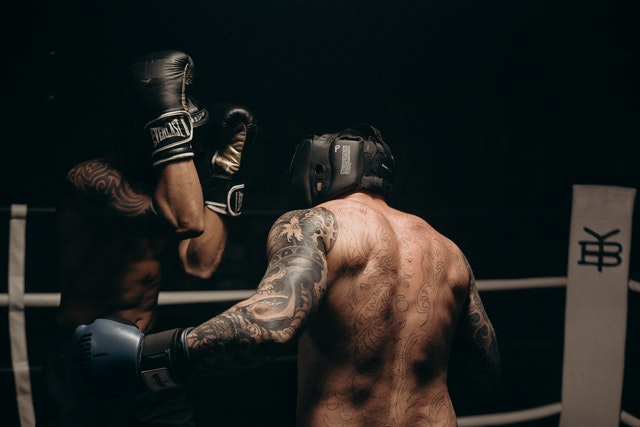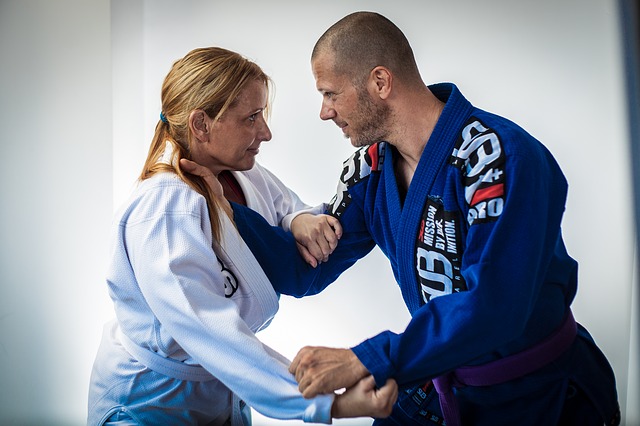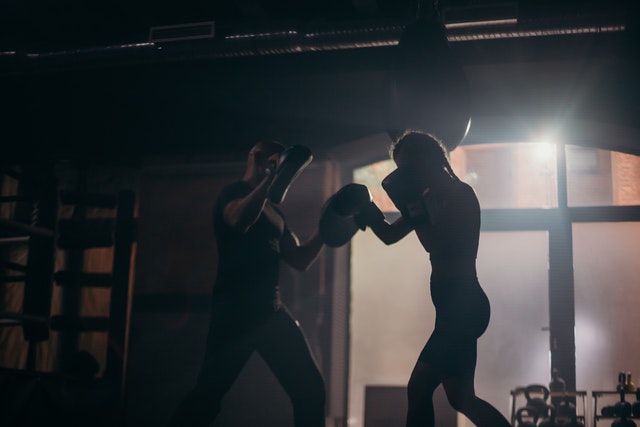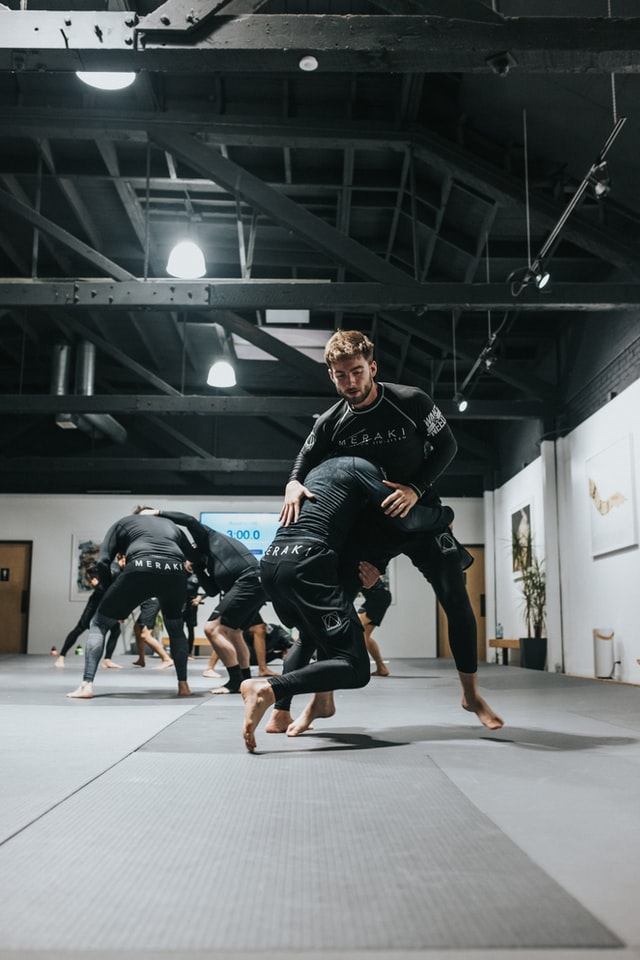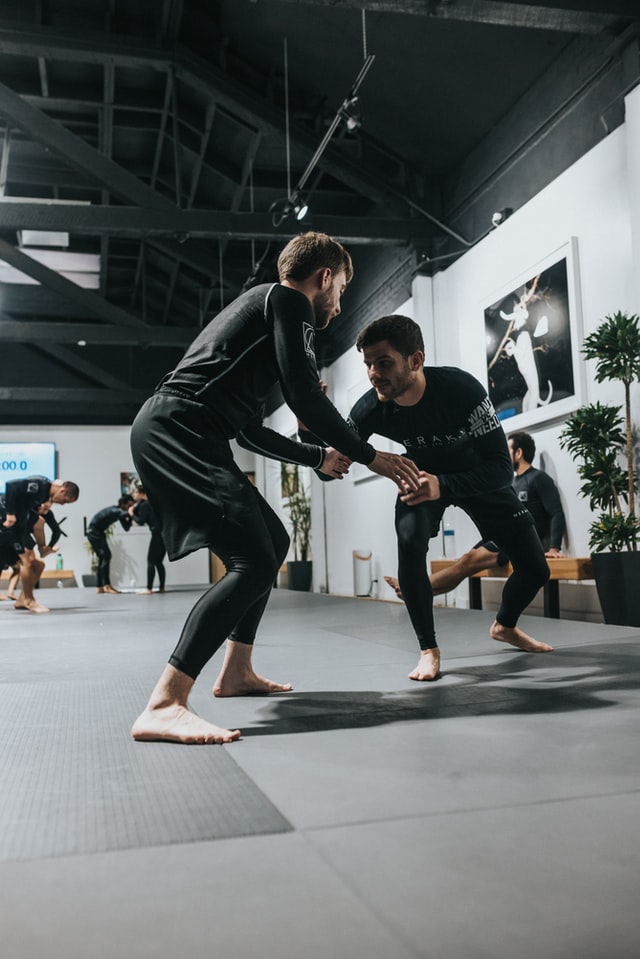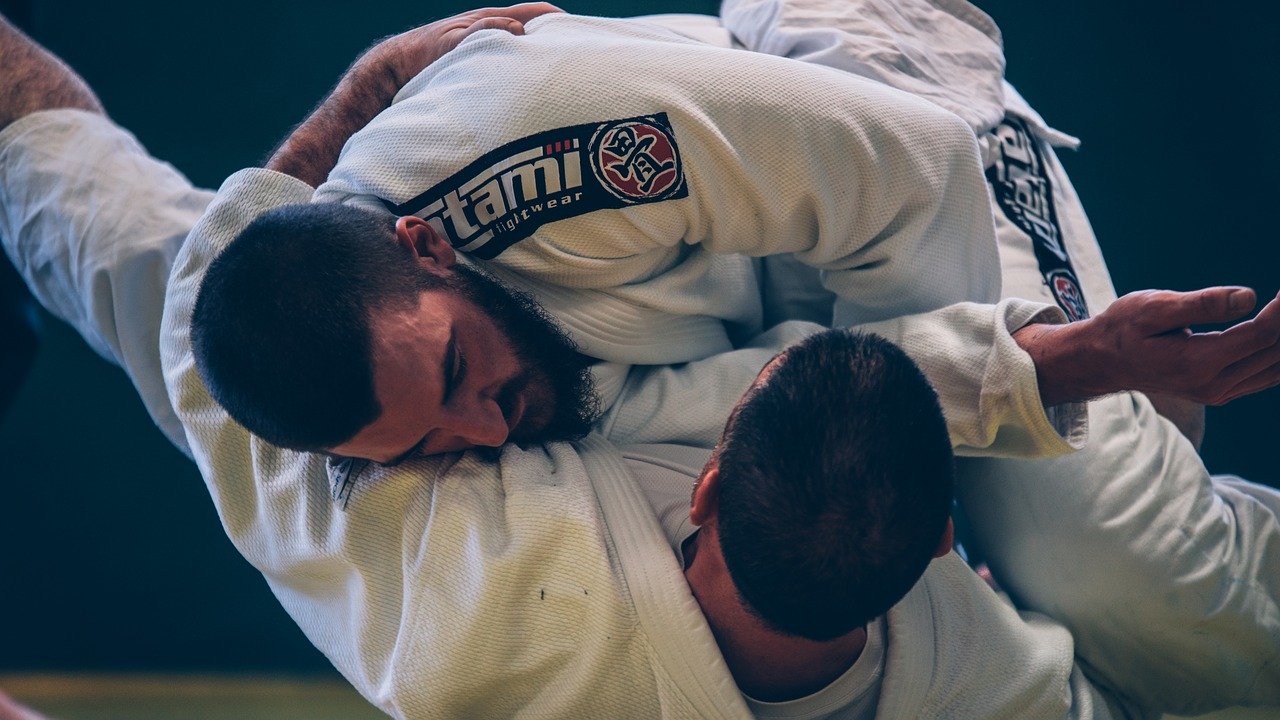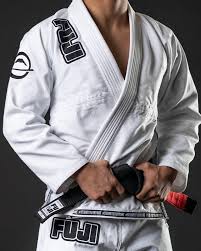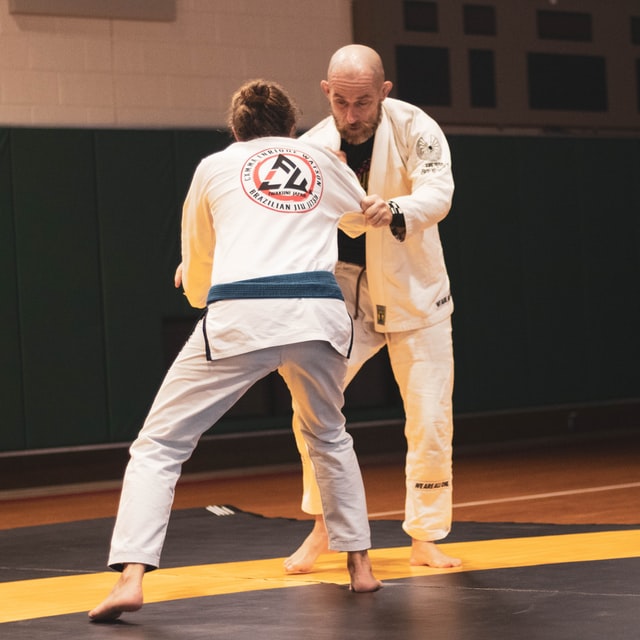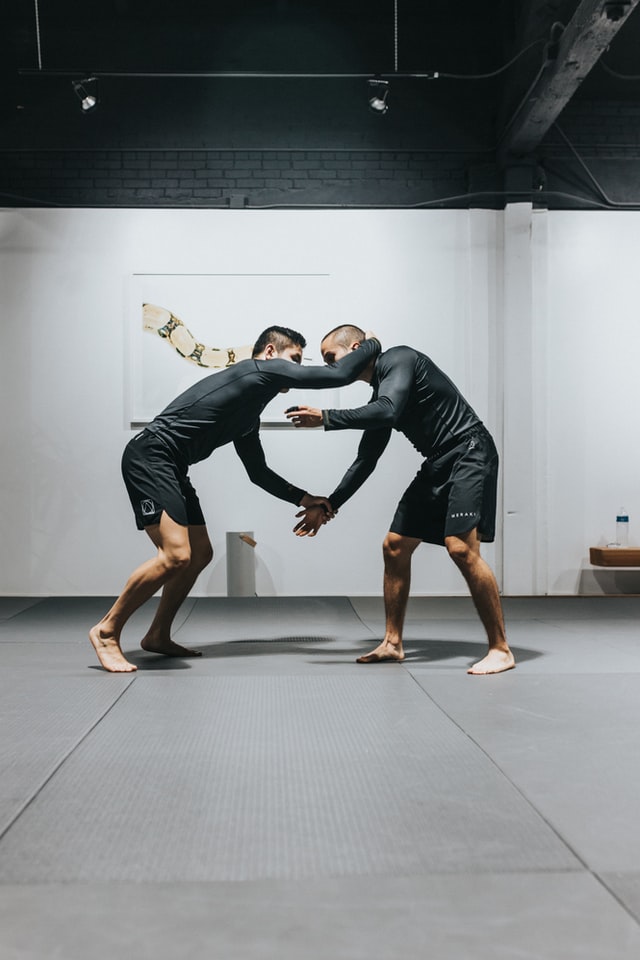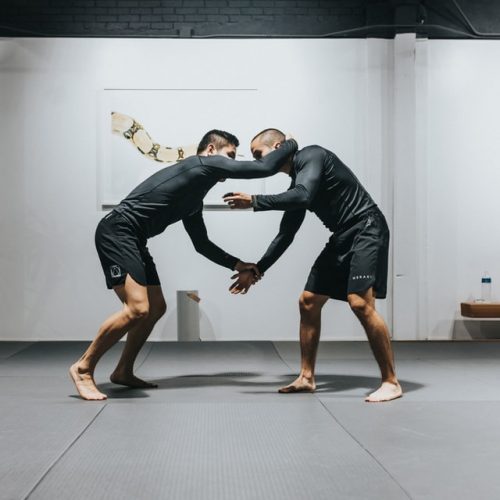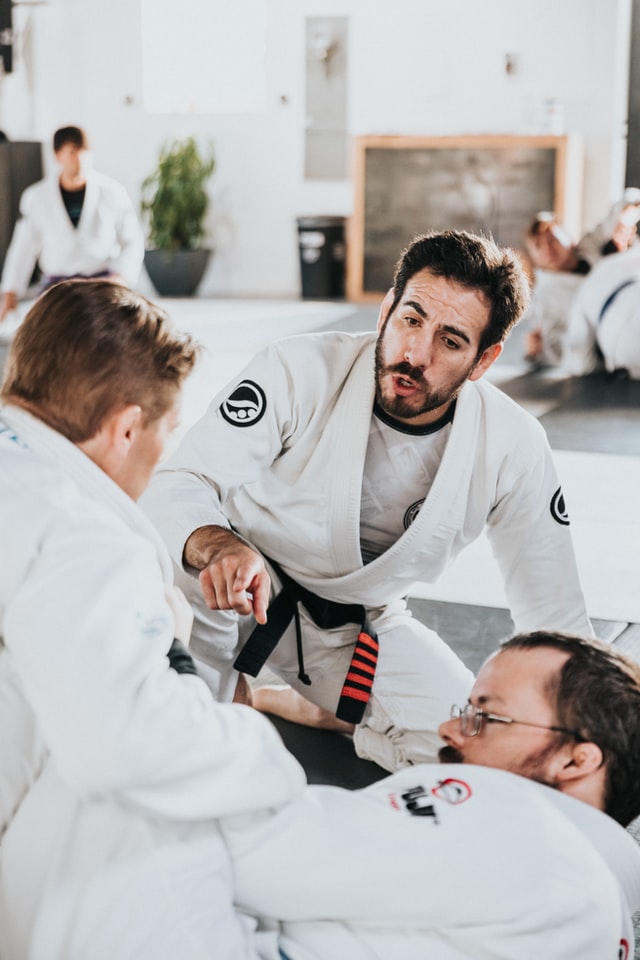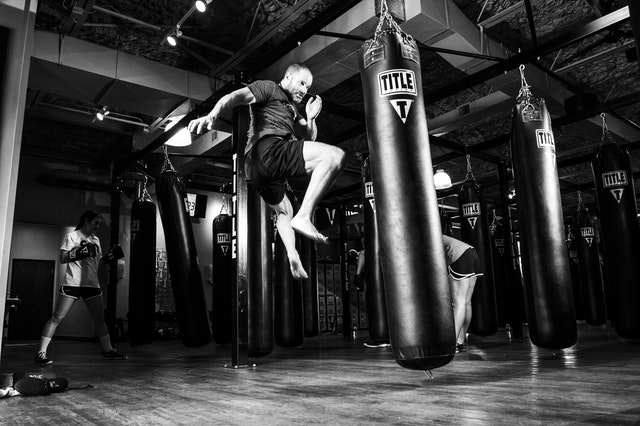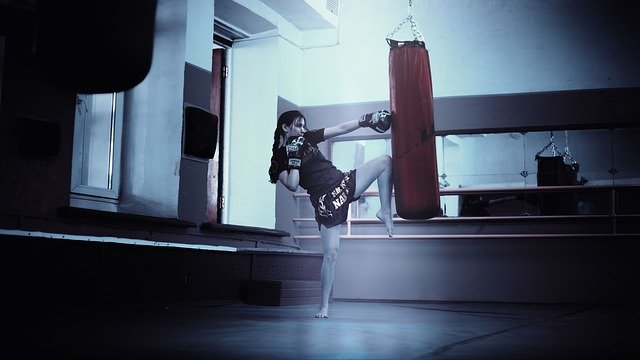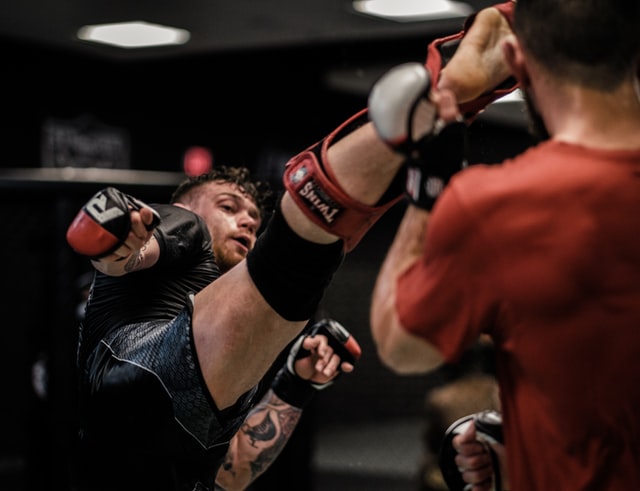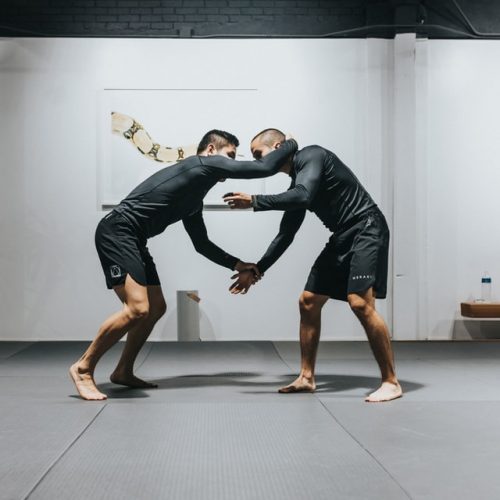Brazilian Jiu-Jitsu vs Taekwondo: The Ultimate Comparison
You have watched the UFC, you enjoyed different kinds of martial art competitions in your local area, but how much do you know about Brazilian Jiu-Jitsu and Taekwondo? There are a lot of differences and little known facts that exist between them and in this article, you are about to find out about those.
Jump to Section
Brazilian Jiu-Jitsu, often called BJJ, is a type of grappling and ground fighting based martial art. Most of the techniques that are taught here are practiced and learned for the ground.
Even though most of the combat is employed on the ground, there are still differences between Karate, Kung-Fu and Taekwondo, and Brazilian Jiu-Jitsu styles. If you are already somewhat more familiar with these fighting types, you will know already that Jiu-Jitsu is considered as grappling while the other martial arts are considered as striking.
Let’s break it down into this way, if you watch karate, you will notice that karate is based on more hand-based punching and strikes. Taekwondo however, is one level up, mixing the same strikes with combinations of kicking. Taekwondo moves are mixed with spectacular combinations of kicks and jumps that can carry away the focus of any viewers around.
Let’s take a deeper look into the differences between these two sports.
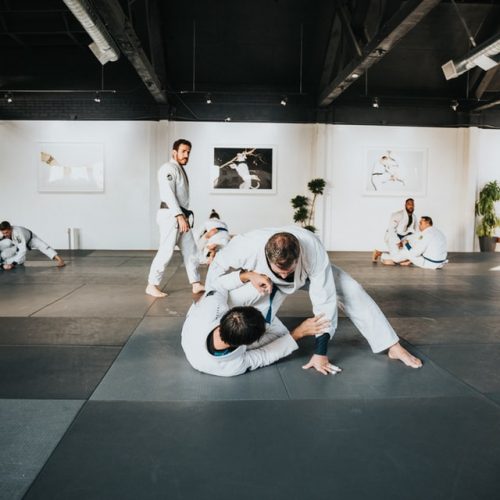
History of BJJ
From the time Royce Gracie won the primary, second, and fourth Ultimate Fighting Championships in the first half of the 90s, Brazilian Jiu-Jitsu has become a leading fighting style on the planet. Today it is a staple fighting style that blends in to the combat techniques of fighters from different traditions. However, you want to know how everything started? To understand the roots of Brazilian Jiu-Jitsu, we should initially take a glimpse at Judo.
Kodokan Judo, usually referred to just as Judo, was founded by Jigoro Kano in 1882. A significant part of Judo was the accentuation on “randori” or non-helpful free competing. Antiquated training for Jiu Jitsu was depended on or was known as “customized structure” or pre-orchestrated groupings of attack and defense moves.
Judo increased public acclaim in 1886 when the Tokyo police held a competition. In 15 matches including Kodokan Judo practitioners against contenders from other exemplary Jujutsu styles, the judo practitioners won 13 matches and tied 2.
For quite a long time Judo dominated Japanese combat sports with numerous Jujutsu schools losing ground to Judo schools. Be that as it may, in 1891 Mataemon Tanabe, the hand-to-hand teacher of the Tokyo police office and a Jujutsu expert of the Fusen-Ryu school, got renowned for crushing an individual official and third-degree Judo specialist in a test battle. Tanabe constrained his rival to the ground and utilized his mentors’ ground fighting strategies to dominate his adversary.
Fusen-Ryu contenders, for example, were prepared for ground fighting procedures, a zone where Judo was inadequate to cope up with. Judo methods were on the whole made out of standup tosses.
In the following matches, Judo practitioners were vanquished when taken to the ground by Fusen-Ryu contenders. Being dazzled and seeing the requirement for ground fighting strategies in Judo, Jigoro Kano welcomed Tanabe to educate at his Judo school.
Mitsuyo Maeda was a Judo master who was educated by Kano himself before being sent throughout the whole world to spread Judo. Maeda battled in a large number of fights with rivals across North America, South America, and Europe. He spearheaded Judo in the United Kingdom and Brazil where he in the long run settled.
In Brazil, he prepared Carlos Gracie and different individuals from the Gracie family. Due to Maeda’s preparation of the Gracies, who continued to develop Brazilian Jiu-Jitsu as a noticeable fighting style, Maeda is alluded to by some as the Father of Brazilian Jiu-Jitsu.
At the point when Maeda got comfortable in Brazil and founded his Jujutsu Institute, one of his understudies was Carlos Gracie. Following quite a while of preparing, Carlos began his school and started preparing his family and others. This began the Gracie administration that has been at the cutting edge of Brazilian Jiu-Jitsu for right around the century. While Maeda might be alluded to by some as the Father of Brazilian Jiu-Jitsu, the Gracies are its author.
Brazilian Jiu-Jitsu kept its focus on what some call “genuine fighting.” Not to state that different styles aren’t genuine fighting, yet Brazilian Jiu-Jitsu has an extremely reasonable, sensible road for fighting applications. Furthermore, since Royce Gracie arranged wins during the 1990s, it has been a backbone in Mixed Martial Arts.

History of Taekwondo
Taekwondo is known as the Korean striking military workmanship for its insane turning and head kicks. While as of late created, it has immediately ascended in notoriety and has become an effectively conspicuous Olympic game, just as being used by MMA contenders, for example, Edson Barboza, Anderson Silva, and Anthony Pettis.
Taekwondo is relatively new to the extent where martial arts are concerned, being created in the 1940s and ’50s and crafted by a few military specialists. The originators of Taekwondo took components of Karate and the Chinese Martial Arts and joined them with the Korean combat techniques of Taekkyeon (which centers on unique footwork and striking), Subak (another powerful military craftsmanship that Taekkyeon was created from), and Gwonbeop (a Korean rendition of one of the Chinese hand to hand fighting traditions).
In 1945, after the Japanese Imperial control of Korea finished new fight schools started to open in Seoul, known as Kwans. At these schools, Korean military craftsmen encouraged different methods they had learned in Japan during the occupation.
The early Taekwondo instructed in the Kwans in the ’40s and ’50s are frequently assembled under the umbrella term of ‘Conventional Taekwondo’, regardless of the way that they were all extraordinary styles of combat. The South Korean Military embraced Taekwondo as their unarmed battle discipline around this time.
It was in 1952, following a military exhibition, that the South Korean President Syngman Rhee proposed that the various styles ought to be consolidated, and in 1955 the Kwan pioneers started to cooperate to bring together the styles of Korean hand to hand fighting.
At first, the style was known as Tae Soo Do, from the Korean Tae for ‘step’ or ‘stomp on’, Su signifying ‘Hand’ and Do signifying ‘Way’ or ‘Control’. The Su was in the long run supplanted with Kwon, at the recommendation of the Korean Army General Choi Hong Hi, which signifies ‘Clench hand’.
The principal Taekwondo league was established in 1959, the Korea Taekwondo Association. In 1966 General Choi established the International Taekwon-Do Federation (Choi is to some degree disputably marked as the ‘Father of Taekwondo’ by certain associations, while others consider him to be an immaterial or even shocking figure).
The two leagues looked to build up a typical, bound together style of Taekwondo. This was confounded by the Cold War legislative issues of the ’60s and ’70s, the South Korean Government needed to restrict the impact of the North Koreans on the game, while General Choi and the ITF looked for help from any place they could get it.
In 1973 the South Koreans pulled back their help from the ITF, which migrated to its central command for Toronto, and in the mid-2000’s part into three associations which all work under a similar name.
Likewise in 1973, the South Korean Government established the Kukkiwon as the new public foundation for Taekwondo, and the World Taekwondo Federation was made with the particular reason for advancing Taekwondo as a worldwide game. The WTF utilizes the Kukkiwon style of Taekwondo, which frequently gets alluded to as the WTF-Style (or either Sport-Style or Olympic-Style) Taekwondo, even though it is a style characterized by the Kukkiwon instead of the WTF.
Since the 2000 Sydney Olympic Games Taekwondo has been one of just two Asian combat sports (the other being Judo) which are included in the Olympic Games after it was exhibited in the 1988 Seoul Games. In 2010 Taekwondo was acknowledged as a Commonwealth Games sport.
Rule differences between BJJ and Taekwondo
There are differences between BJJ and Taekwondo and we are here to show you the key difference between them. First of all, BJJ is open ended fighting where taekwondo is more like a traditional fighting technique. In Brazilian Jiu-Jitsu, you can win a match by applying different types of techniques while fighting. The more you show, the more points you will earn.
On the other hand in Taekwondo, you have to land your attack on a certain zone of the body.
For Brazilian Jiu-Jitsu,
- 2 scores are granted for a takedown
- 2 scores are granted for clearing (an inversion from one has returned to on head of the adversary)
- 3 scores are granted for passing the adversary’s guard
- 2 scores are granted for getting a knee mount position
- 4 scores are granted for total mount control
- 4 scores are granted for reverse control
- etc
For Taekwondo,
- Taekwondo matches ought to be challenged by contenders of similar sex and in a similar characterized weight classification.
- The opposition region is a tangled mat that estimates 8 meters squared.
- Taekwondo matches are more than 3×2 rounds with a break between the game rounds.
- Every contender endeavors to knockout their adversary or score focuses via landing blows on their rival’s middle or head. Kicks are permitted to both to the middle and head, while punches are just permitted to the body. Underneath the midriff isn’t an allowed target.
- If a contender and their mentor imagine that a point has been missed or that a mix-up has been made, they can make a dissent. A video replay is then taken a look at by the judges and a choice is made.
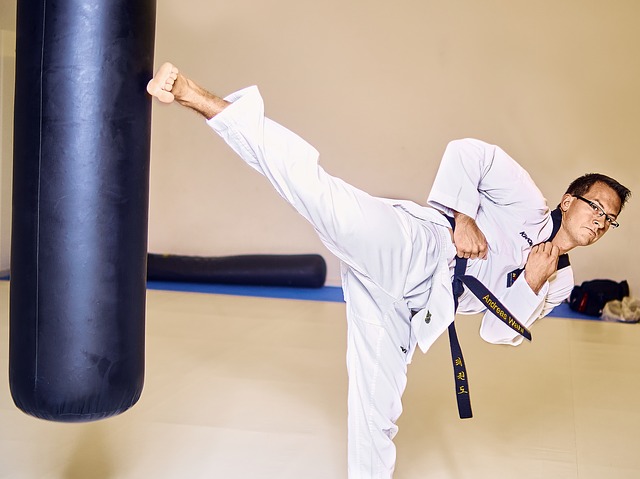
Belt System and Progression Differences
For Brazilian Jiu-Jitsu
BJJ Belts
The belt progression framework in BJJ is like Judo, yet there are fewer belts. In BJJ, the belts are categorized as advancement from white to blue, at that point purple, brown, and then lastly black.
The two martial arts require long periods of preparation to arrive at a black belt. Different people’s advancement differs depending on preparation time, age, physicality, etc. A contender preparing a couple of hours consistently will advance quicker than a specialist preparing a couple of times each week. But in general, it may take those admonitions or a normal individual to
- 5-10 years to arrive at a Judo black belt
- 8-12 years to arrive at a BJJ black belt
Along these lines, every martial art branch requires a lot of duty and commitment to get into a black belt.
For Taekwondo
Numerous Taekwondo starters are frequently befuddled about Taekwondo belts. Some think there is just a single general taekwondo belt framework, however in actuality there are many.
This contrast between belt frameworks is because of the assortment of taekwondo associations, and your school is receiving its belt framework relying upon its connection with a particular association.
White Belt (tenth Geup): White has the importance of vacancy; it shows the humbleness and absence of information on an apprentice.
Yellow stripe (ninth Geup): A center stage between an absolute apprentice and a yellow belt.
Yellow Belt (eighth Geup): The analogy of yellow is the seed planted.
Green stripe (seventh Geup): Middle stage among yellow and green
Green Belt (sixth Geup): The seed presently is beginning to grow a plant and the specialist is developing gradually
Blue stripe (fifth Geup): Middle stage between the green belt and the blue belt.
Blue Belt (fourth Geup): Signifies the sky as the plant is seeking to go high towards the sky unbounded
Red Stripe (third Geup): Middle Phase between the blue belt and red belt
Red Belt (second Geup): Red is an indication of blood, this is an admonition to the understudy that they are acquiring a deadly weapon, poising ought to be extremely present.
Black Stripe (first Geup): Middle stage between the red belt and black belt
Black belt: The understudying person is then awarded the black belt once they pass the first Geup.
Training Differences
Gi and Nogi for Brazilian Jiu-Jitsu
At the point when you begin Brazilian Jiu-Jitsu you’ll notice that there are two distinct sorts of Brazilian Jiu-Jitsu; one is called Gi and the other Nogi. Gi preparation is conventional BJJ, prepared in the Gi (otherwise known as Kimono).
Nogi is in another way, such training, as the name suggests, is BJJ without the Gi, prepared in shorts, and a basic difference between Gi and Nogi is the capacity to grasp your rival’s Gi while doing the more conventional variety of BJJ training. You can utilize your holds on your rival’s Gi collar, sleeves, and pants or on the other hand belt, to unbalance them and in hope to throw them.
This seemingly permits a more prominent assortment of throws as control of your adversary and to take them down. What’s more, lower body takedowns, for example, twofold and single legs can be harder to accomplish as your rival can keep you from dropping to get a handle on the legs with grasps of his/her own.
Taekwondo
In Taekwondo training, you need your body to be strong, yet not massive. There’s a contrast between being strong and building enormous muscles. At the point when individuals consider quality preparation they generally consider pump iron inside the body in the training center which isn’t extraordinary for hand to hand fighting. Your training isn’t tied with expanding your muscle size; however, you may need to take a shot at speed to create power.
Aerobic Exercises: Many of the activities are vigorous. If you like hopping rope, running set up, bouncing jacks, and going around the dojang doing air punches then Taekwondo exercises will be easier for you.
Stretching: Stretching is vital to quality preparation, because as individuals get more grounded their muscles and become more firm for Taekwondo training.
Push-ups and Sit-ups: If you go through varieties of leg siphons, side-ups, push-ups, and sit-ups, transformed sit-ups, back-ups. Leg lifts, planking regularly, then think that Taekwondo classes are already half done.
Wrist and Ankle Weights: Your body weight is an extraordinary type of opposition when working out, however, you will likewise join light wrist and lower leg loads for Taekwondo.
Clothing and Equipment (differences/similarities)
Jiu-Jitsu
Judo outfits and Jiujitsu outfits are to some degree comparable. In case you’re calmly preparing in BJJ, for instance, an training center may permit you to use your judo gi. The size of the judo gi may place you off guard in competing, however, because it takes into consideration more accommodation based assaults utilizing your uniform against you.
While the Judo gi top is customarily long and has wide sleeves, the jiu-jitsu gi’s coat is by and large fits more tightly to the body, with a more limited skirt, and more limited, smaller sleeves. Jiu-jitsu gi’s come in various tones, loads, and weaves. Some can even be brightened with patches and weaving.
While these potential outcomes permit jiu-jitsu contenders to customize their gis, a few rec centers will have rules about what tones and fixes are permitted in class. BJJ and jiu-jitsu competitions additionally accompany their guidelines about sleeve and gasp estimations to guarantee reasonableness.
Taekwondo
Taekwondo gets advancement from karate’s impact, Taekwondo dresses are developed from the karate gi in long times. Today, the top TKD gi, otherwise called a dobok, has moved away from the fold overcoat supported by numerous other combative techniques to grasp a more shirt-like slipover coat. It permits martial fighter specialists to execute their strikes without the worry that their coat could come open whenever.
Slipover judo uniforms come in various styles, loads, and tones. Like the hand to hand fighting outfits examined over, the correct decisions on these issues will rely upon the martial dress. There is one principle that is exceptional to Taekwondo, however: black dress collars are explicitly for black belts and should just be worn by individuals who accomplished that position in the order.
BJJ vs. Taekwondo: Pros and Cons
Brazilian Jiu-Jitsu Pros
Demonstrated to be powerful: BJJ has demonstrated its adequacy consistently, all things considered, and MMA circumstances.
Self-defense: The central conviction of BJJ is to control and overpower a stronger untrained opponent utilizing a variety of chokes and joint locks.
Community: BJJ has a magnificent community that is steadfast companions to each other.
Wellbeing: BJJ is an incredible way to get fit and get strong.
Mental Benefits: BJJ can help you overcome anxiety and strengthen your mental resilience
Extraordinary for Kids: BJJ is an extraordinary sport for kids, and can assist kids with building discipline.
Loads of competitions: There are numerous associations continually running BJJ competitions around the globe, so there are a lot of opportunities to compete every year.
Taekwondo Pros
Self-defense: Some would contend that Taekwondo is a decent type of self-defense. The distinction between BJJ and Taekwondo is that it is striking based.
Wellbeing: Like BJJ, a few styles of Taekwondo can be a decent exercise to get fit and healthy.
Extraordinary for Kids: Taekwondo is likewise incredible to keep kids dynamic and in an invigorating atmosphere and activity outside of school.
Brazilian Jiu-Jitsu Cons
No striking: BJJ does exclude striking, which implies it’s seemingly not a total fighting framework. This is why many people don’t consider it a perfect sport.
Taekwondo Cons
Fewer schools: Taekwondo is an incredible art, however throughout the last 20-30 years this art has been discolored by schools called “mcdojos.” These schools care more about their own benefits than showing the self-defense techniques which Taekwondo was established upon.
No ground work: Our biggest concern is that Taekwondo does not involve any ground fighting techniques
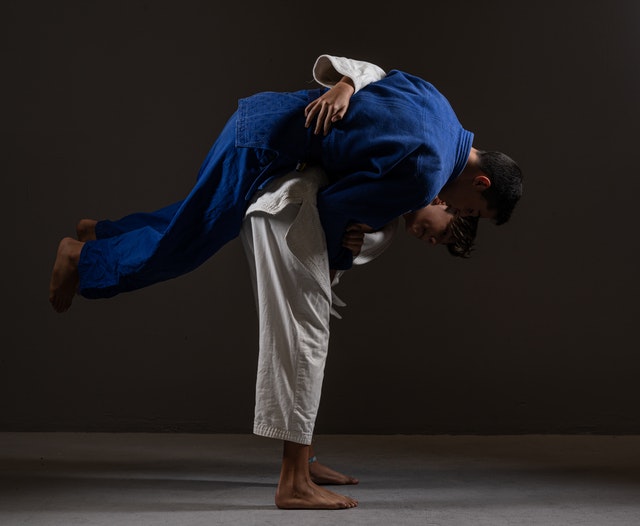
Which is better to learn for self-defense?
According to our assessment, for self-defense, it is better to learn Brazilian Jiu-Jitsu as it prepares you better for street fights which most likely will end up on the ground. More so, because of its strength on the ground, you will also be taught to takedown attackers to reduce any impact from punches or kicks.
On the other hand, Taekwondo contains a lot of formal rules and regulations, and also one needs to be fast enough to fight for self-defense which is a bit tough for any to do on the ground. This is why for any kind of self-defense; Brazilian Jiu-Jitsu is the best pick for anyone and any age.
BJJ vs. Taekwondo for Kids
You must keep one thing in mind that Taekwondo is hard training compared to any martial arts. Jiu-jitsu has fewer rules and regulations but to be a Taekwondo fighter, one has to have a lot of natural abilities.
For instance, if you have seen the videos of Taekwondo training, then you would see that in the very beginning, the trainer has to practice for leg stretching which is a tough task to accomplish. Many kids fail to start the training and finish it due to this. On the other hand, BJJ training is quite informal. It contains fewer rules and regulations. It’s depending on the kids who enjoy the training and who don’t. BJJ is less strict with natural abilities and physiology.
BJJ vs. Taekwondo for Fitness
In both BJJ and Taekwondo, you need to stay fit. But in the case of Taekwondo, you need to stay fit more as you need to have speed, and also your legs need to be move faster. BJJ fitness is usually gained in the gym but for Taekwondo, you need to stay fit by doing some extra exercises.
Conclusion
Both of these martial arts are a great choice, there is no need to be biased that this one is better over another. Both are legal and legitimate so you can always pick any of them if you ever feel to become a martial artist.
Share
Share on facebook
Facebook
Share on pinterest
Pinterest
Share on whatsapp
WhatsApp
Share on twitter
Twitter
Your may also like
ABOUT US
Jiu-Jitsu Street is a community of fun loving and hard rolling BJJ enthusiasts. Born out of our passion for the gentle art, we have decided to create this blog and help you on your journey. Let’s grow and learn together on this never-ending journey. Oss!
Recent Articles
LEGAL INFORMATION
Jiu-Jitsu Street is a participant in the Amazon Services LLC Associates Program, an affiliate advertising program designed to provide a means for sites to earn advertising fees by advertising and linking to Amazon.com. We are compensated for referring traffic and business to our Affiliate Partner companies.
